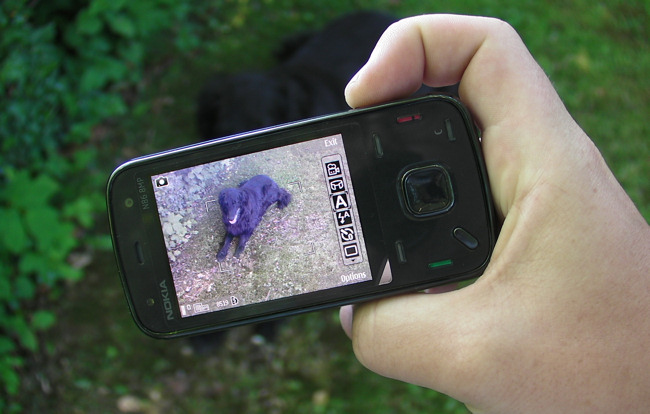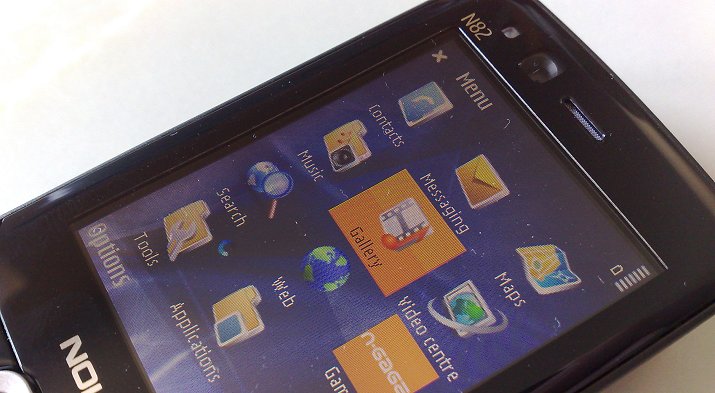
(Thanks to Kev Wright, Tim Salmon, Jon Satherley and David Gilson for their input in suggesting devices)
In one of my Pimping pieces last week, featuring the Nokia N82, I praised its unique qualities - I had call to use them again yesterday, when out in a country museum with family. The sun was scorching outside in the gardens, while the inside exhibits were very poorly lit and all rather gloomy (though we did - admittedly - enjoy the cool and shade). The N82 had to cope with screen visibility and taking photos in incredibly bright conditions outside - and then switch to flash photos in the museum, in near darkness. With the Xenon flash it excelled, of course.
Such an example is very obviously playing to the N82's strengths, but what about a totally different use case? What about the commuter travelling in to work in the city, wanting 40 minutes of entertainment, information and productivity from his or her smartphone twice a day? The N82 would be very mismatched here, but it would play perfectly into the hands of, for exam ple, the Samsung i8910 HD.
Except that, yet again, the recommendation has to be broken down, since setting up the i8910 HD is not for the faint-of-geek-heart.
Which is why I've returned to my Phones Show idea of defining seven different stereotypes, seven use cases if you will, and then looking at the best devices for each, as at June 2010, but also looking forward a little to the rest of the year.
Yes, of course, every real world user is going to be a mix of the various stereotypes, but at least it'll give you a place to start. Here are the use cases:
1. Media Creator. You love taking photos with your phone, shooting videos too, of your family and friends, of the world around you. Having a great camera and camcorder with you at all times is the highest priority when choosing a smartphone.
2. Communications junkie. The hands-down toughest 'category' to judge. You love staying in touch via email, Twitter, Instant Messaging and Facebook. You need a good screen and a great (physical or virtual) qwerty keyboard, along with responsive software.
3. Hardcore mobile gamer. Never mind Bejewelled and Tetris, we're talking about real time rendered 3D gaming, from first person shooters to touring car racing to flight simulation to fantasy aerial combat. And everything in between.
4. Media consumer. You love your music, your video collection, your audio and video podcasts, BBC iPlayer downloaded programmes, and access to YouTube.
5. Work addict. What's needed here is complete Office editing compatibility, good PDF viewing, plus interoperability with push from/sync to as many email systems as possible, a great qwerty keyboard, insane battery life (so you're not left high and dry) and a great conference call capability wouldn't go amiss.
6. Tech enthusiast/hacker/fiddler. You know who you are, here! You think nothing of spending an hour or two fiddling with new themes, or rebuilding your system disk to regain an extra few Megabytes of space, or following ten-step command line procedures to gain extra unsupported functionality. OK, ok, you love hacking. And you don't mind a phone being a work in progress from the manufacturer.
7. Web-a-holic. Never mind applications and local utilities, what you need is the World Wide Web in your pocket. Full web sites, full functionality, including Ajax, Javascript, and, yes, Flash where necessary. What you need is your desktop's web browser in your pocket.
Which of the above stereotypes sounds most like you. I wonder? (I'm mainly 1, with a touch of 2 and 4...!)
____________
Now, this is All About Symbian, not All About Smartphones, and you'll be expecting me to restrict my choices to just those phone powered by Symbian OS. However, this would be doing everybody a disservice, since Symbian-powered phones need to be seen in context in the industry in which they're sold. If a Symbian-powered device is better than the competition, running on other mobile platforms, so let's be clear and say it. And if Symbian OS has to catch up in supporting and empowering a particular use case then let's be clear about that too.
Do note that everything in this feature is assuming that price isn't a factor. In other words, it's choosing based on functionality and usability alone. If your budget is stretched then you will of course have to compromise 8-)
And so to each stereotype, taking them in order:
1. Media Creator. "You love taking photos with your phone, shooting videos too, of your family and friends, of the world around you. Having a great camera and camcorder with you at all times is the highest priority when choosing a smartphone."
One of Symbian's strongest showings, spearheaded by some great camera and video capture smartphones. On balance, the Nokia N86 8MP just can't be beaten here, giving top notch video with a digital microphone for superb sound (which is why I use it to film The Phones Show), including intelligent zoom, variable aperture and a wide angle lens. The N86 is also rugged enough to take the knocks out in the field.
Other contenders for this category were the Samsung i8910 HD - in theory topping the N86, but requiring a dedicated approach to self-flashing of firmwares - and even fully configured, it's debatable whether video and stills are better; the aging Nokia N82 - still special because of its Xenon flash; the Apple iPhone 3GS; and the Sony Ericsson Vivaz - let down by its general interface, poor audio capture and ridiculous flash arrangement.
2. Communications junkie. "You love staying in touch via email, Twitter, Instant Messaging and Facebook. You need a good screen and a great (physical or virtual) qwerty keyboard, along with responsive software."
My choice here is the Nokia E72. Despite S60 3rd Edition not being so trendy as other 2010 mobile platforms, Nokia Messaging and Gravity make the E72 into a messaging and social powerhouse. And all with a robust form factor, decent qwerty keyboard for bashing out text, a surprisingly good camera (just in case) and a battery that goes on and on and on...
Contenders in this category included the HTC Touch Pro 2 - aging and the Touch FLO/Windows Mobile combination seems to just get in the way half the time; the Nokia N97 mini - great keyboard and form factor but the limited RAM would probably bring your conversations to a halt at some point; the Nokia E75 - great keyboard and flexible form factor, decent metal build quality, but ultimately the E72 exceeds it in almost every way; the Apple iPhone 3GS (again) - excellent software options, but the lack of multitasking and a kludgy notifications system means that this is one area where you're fighting iPhone OS (and you don't get to say that very often); the Motorola Milestone/Droid - pushed the E72 close, has a great screen and Android has all the social tools you need, but it ultimately let down, fairly horrifically, by the awfulness of the qwerty keyboard; the Google Nexus One - Android again, and software-packed, but you can't beat a physical qwerty keyboard when bashing out real world messages in a hurry; the Blackberry 9700 - similar form factor to the E72 but let down by idiosyncratic and old fashioned interface; and the Nokia E55 - in many ways as good as the E72 in a smaller, slimmer form factor - but that half-qwerty keyboard does take some getting used to.
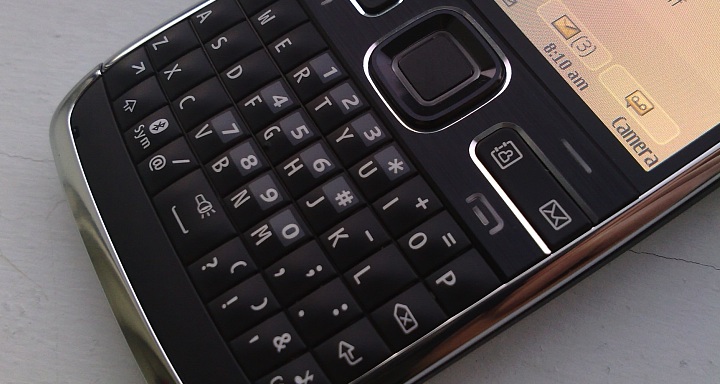
3. Hardcore mobile gamer. "Never mind Bejewelled and Tetris, we're talking about real time rendered 3D gaming, from first person shooters to touring car racing to flight simulation to fantasy aerial combat. And everything in between."
The only possible winner here, and breaking out of the Symbian world for the first - but not last - time in this feature, is the Apple iPhone 3GS. From the very beginning, Apple specified hardware graphics acceleration (ironically just as Nokia was phasing it out, post-N95, for cost reasons) in their devices, making some tremendous games possible, right up to full 3D realtime rendered high-res graphics. Apple built it and the developers came, with the result that all the best handheld games are on the iPhone - period.
Not surprisingly, the only contenders come from Apple too: the iPad and iPod Touch, both of which will run the same games. From the Symbian world, gaming is well and truly stuck in the realms of 'casual' titles, i.e. those without much action, because of the hardware limitations. The Sony Ericsson Satio/Vivaz and Samsung i8910 HD do have plenty of RAM and graphics chips, but they're not mainstream enough yet. Gaming on Android is also very shallow at present.
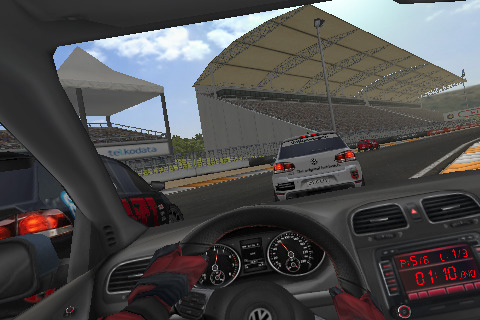
Actual in-game screenshot on the iPhone 3GS. This runs at 30 frames per second!
4. Media consumer. "You love your music, your video collection, your audio and video podcasts, BBC iPlayer downloaded programmes, and access to YouTube."
Symbian-critics will cry a fan boy foul here, but I'm going to plump for Samsung's forgotten flagship, the Symbian-powered Samsung i8910 HD here. It more than matches any of the other contenders in terms of raw power and video codecs, plus it includes the gorgeous and huge OLED display plus, importantly, two of the loudest and highest quality speakers in the phone world. Heck, you even get Dolby 5.1 mock surround sound! The only caveat is that the stock Samsung firmware leaves the user without much disk space on the system (C) disk - I recommending heading straight for one of HyperX's replacement ROMs instead.
Just behind the i8910 HD are a whole range of contenders; the Google Nexus One benefits from maximum performance and the very latest OS from Google, with the v2.2 'Froyo' update giving the device a big boost - YouTube clips are handled at higher quality than on many other platforms, Google's Listen podcasting client now works very well, plus most other videos look great on the OLED screen; the HTC Desire is, essentially, a very similar device, adding layers of HTC customisation but lagging behind the Google device in raw performance and updates; Nokia's N97 and N97 mini are surprisingly good at handling media, not least because of their built-in tilting displays, though their flaws in terms of RAM and resources are well known - the mini might have nicked this category if it hadn't been for the smaller, 3.2" display; ditto the newer Nokia X6, with smart capacitive screen but let down again by performance; ditto again the older Nokia 5800, but this time with the older screen tech; the much maligned Nokia N96 is still a great media player, for audio and video, but you couldn't exactly recommend it to anyone because of its general performance; the Apple iPhone 3GS, which is probably the very best smartphone for media consumers if they're happy to be tied to iTunes and side-loading - the Nexus One (and most others here) score by being able to acquire all their own media without the need for a desktop; the Motorola Milestone/Droid is pretty darned good at media too, in similar fashion to the HTC Desire, adding a better speaker but with a more standard TFT display; finally, one more Android device is worth a mention - the Sony Ericsson X10, if only because it has the best screen of any smartphone in the world - a 4" transflective display that even bests the iPhone's.
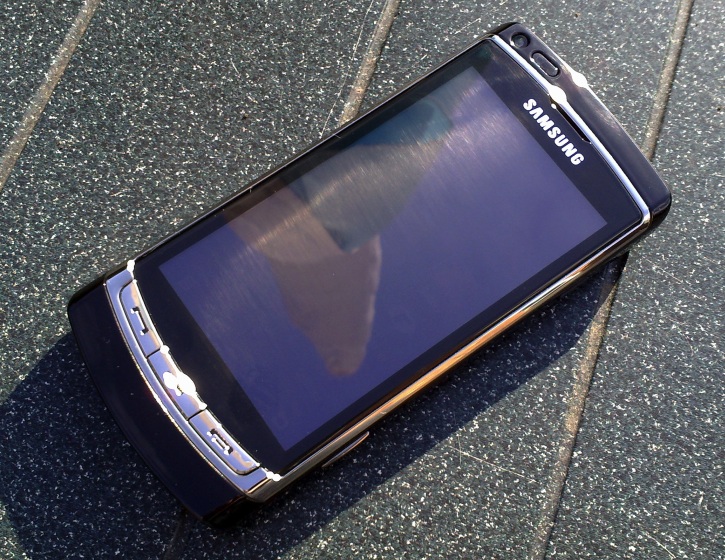
5. Work addict. "What's needed here is complete Office editing compatibility, good PDF viewing, plus interoperability with push from/sync to as many email systems as possible, a great qwerty keyboard, insane battery life (so you're not left high and dry) and a great conference call capability wouldn't go amiss."
Again a Symbian-powered smartphone takes my recommendation - in fact, this is a strong stereotype to bring Symbian OS to, considering Nokia's Eseries specialism. A year or two ago, the metal monster Nokia E90 would have been the natural recommendation, but with the abundance of other portable options for on-the-go typing (iPad/netBook etc), it's debatable whether you need to push the fit of your pocket so much just to get in a slightly larger qwerty keyboard. So, why not compromise a little more on the keyboard and get somthing that's genuinely small and thin, without compromising on the actual software? It's therefore another win for the Nokia E72 (or indeed the E71 before it, if you're buying at second hand prices), with insanely pocketable form factor, the full Quickoffice editing suite, a decent speaker, a monster battery, plus more email options than you can name.
Also in contention here are HTC's aging Touch Pro 2, with a great keyboard and main speaker but held back enormously by the mish mash of software and interface; the Motorola Milestone, the only top end Android smartphone with a qwerty keyboard but it's not great and you'd have to pimp out its software quite a bit; the Nokia E55, which crams the E72's (and E90's) software loadout into an impressively slim and thin form factor but the portrait screen seems 'wrong' for work use and there's that fiddly half-qwerty system; the Blackberry 9700 - again with the same candybar qwerty form factor and a natural choice if you've been brought up on Blackberry - but you wouldn't recommend one to a new user; and finally the Nokia N97 and N97 mini, both of which have a surprisingly good keyboard but which you'd have to pimp a little by adding Quickoffice Premier and other software, and with lacklustre speakers - the 'classic' version is also underpowered and you're liable to come unstuck during an important email exchange, while the latter will let you down by running out of battery at a crucial moment.
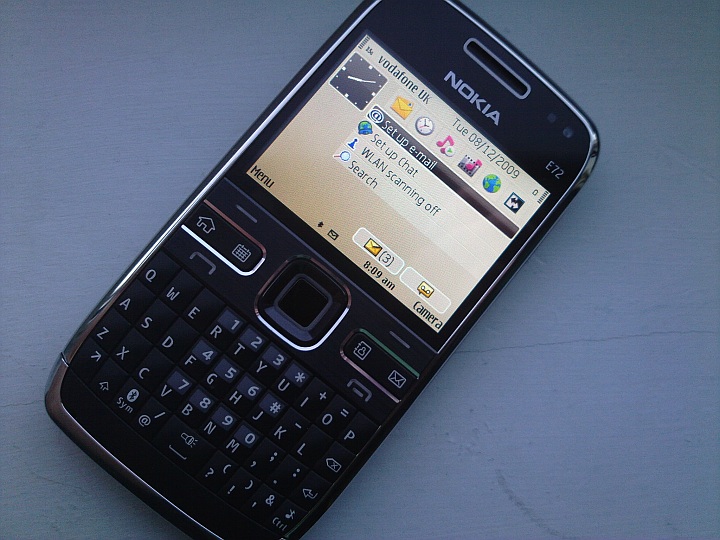
6. Tech enthusiast/hacker/fiddler. "You know who you are, here! You think nothing of spending an hour or two fiddling with new themes, or rebuilding your system disk to regain an extra few Megabytes of space, or following ten-step command line procedures to gain extra unsupported functionality. OK, ok, you love hacking. And you don't mind a phone being a work in progress from the manufacturer."
My top recommendation here has to the the Nokia N900 - it's not often you get the chance to work with a device whose very OS can change markedly from quarter to quarter. Maemo 5 was always a work in progress (follow it on All About Maemo), and with MeeGo now imminent, the N900's status is going to keep evolving, even if it never makes it as an 'official' Meego device. Effectively a version of Linux, you can be fiddling with the N900, delving into app repositories and applying command line hacks until the small hours, if you so choose.
Also in contention here are the Samsung i8910 HD, for which every new third party firmware seems an adventure and involves reinstalling just about everything; the Apple iPhone 3GS - but only if you jailbreak it, meaning that you're riding the bleeding edge - full multitasking, unchecked apps, the works; and the Nokia N97 - its well publicised C: disk space problems mean that you have to be an inveterate geek to get a fully working system and keep it all up in the air.
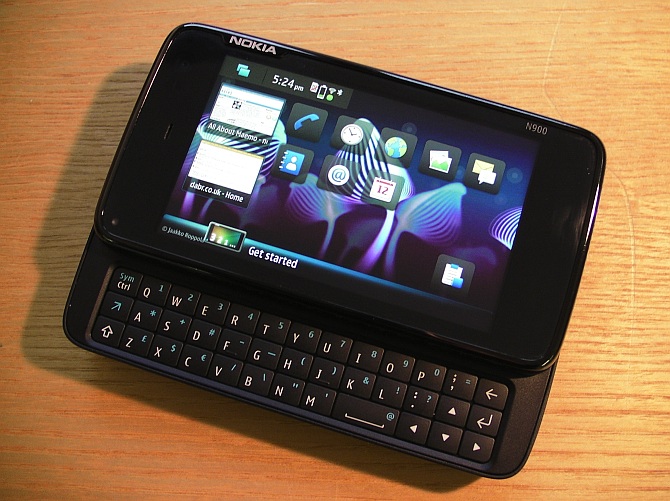
7. Web-a-holic. "Never mind applications and local utilities, what you need is the World Wide Web in your pocket. Full web sites, full functionality, including Ajax, Javascript, and, yes, Flash where necessary. What you need is your desktop's web browser in your pocket."
And what you need is a top Android phone, with large, high resolution screen, multi-touch for easy browsing and full Flash support built-in. The pick of the crop right now is the HTC Desire, with Flash being one of the big additions HTC made since the Nexus One's original launch.
Also possibles are the Motorola Milestone, which lacks Flash out of the box but which has a qwerty keyboard for URL entry - and it seems you can retrofit Flash now anyway; and the Nokia N900, whose heritage as a possessing a lightly cut down desktop OS means that Flash is built-in and running well - it's let down mainly by the lack of multitouch and by the slightly dull screen.
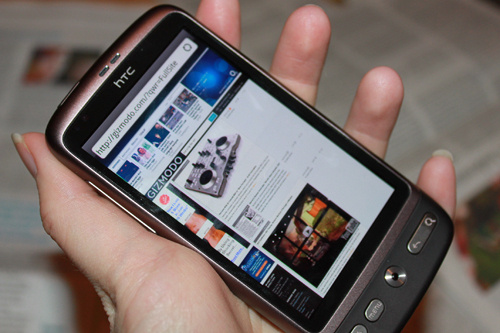
Photo source: www.theitchronicle.com
Of the seven stereotypes/categories, four featured Symbian-powered hardware as my recommendations, demonstrating at least some relevance in this modern age, despite what the tech press would have you believe. The bad news is that three of the four recommendations were for devices running S60 3rd Edition FP2 - and that the fourth (for the i8910 HD) used S60 5th Edition (a.k.a Symbian^1) but with a number of significant tweaks.
Symbian's (and Nokia's) drive to push smartphones ever lower in price, plus the awkwardness of the transition to 'touch', have, of course, left the high end of the market very vulnerable, but the imminent Symbian^3-powered Nokia N8 should immediately make an impact in at least two of my stereotypes (1 and 3) - provided Nokia follows through with a qwerty-driven Eseries equivalent then that would be stereotype 3 (and possibly 2) sewn up.
Things change at a startling rate in the smartphone world, mind you. I'm writing this on the eve of Apple's big annual iPhone refresh - and you can bet that the new iPhone will challenge other categories in my framework far more seriously...
Steve Litchfield, All About Symbian, 6 June 2010

